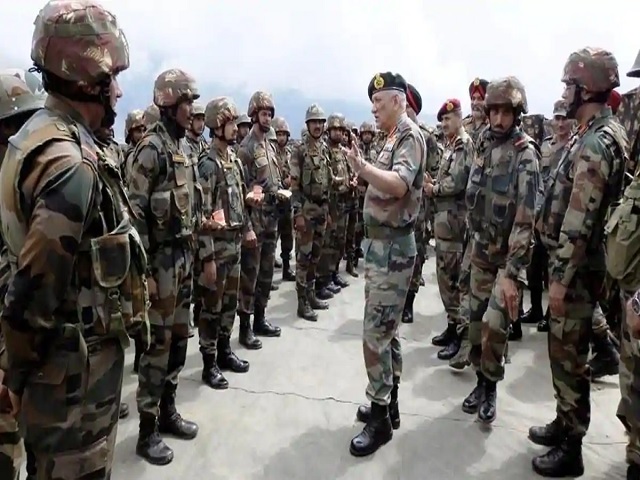‘Plans under way on creation of Integrated Battle Groups’
Army has identified a holding formation on Western front and a Strike formation on Northern borders to be converted into agile Integrated Battle Groups (IBG).
Integrated Battle Groups

- Aim: To have forces which are lean, quick and will provide commanders the flexibility and more options for their employment in the respective theatres to achieve the desired outcomes.
- Concept of IBG has already been tested by Army’s 9 Corps and was later validated by 17 Mountain Strike Corps in its exercises.
- Three T’s: Each IBG would be tailor made based on Threat, Terrain and Task and resources will be allotted based on the three T’s.
- Idea is to be light with centralised logistics and be able to mobilise within 12 -48 hrs based on the location.
- While a Command is the largest static formation of the Army spread across a defined geography, a Corps is the largest mobile formation.
- Each Corps has about three Divisions.
- Objective: reorganise them into IBGs which are Brigade sized units but have all essential elements like infantry, armoured, artillery and air defence embedded together.
- IBGs will also be defence and offensive in nature.
- After terrorist attack on Parliament in 2001, Army formulated a proactive doctrine known as ‘Cold Start’ to launch swift offensive, but its existence was denied in the past.
Need
- After the terrorist attack on Parliament in 2001, the Indian military undertook massive mobilisation under Operation Parakram but the Army’s formations which were deep inside took weeks to mobilise losing the element of surprise.
- The approval for restructuring of the Indian Army was granted by the Defence Minister Rajnath Singh in August 2019.
- The aim of restructuring the 1.3 million strong Indian Army is to make it ‘leaner and meaner’ and enhance its combat effectiveness.
- At present the Army is structured to have 3-5 units comprising a Brigade, 3-5 Brigades comprising a Division, 3-4 Divisions comprising a Corps.
- While a Command is the largest static formation of the Army spread across a defined geography, a Corps is the largest mobile formation.
- The Integrated Battle Groups will replace the division formation in the Indian Army.
- In order to improve synergy, cohesiveness, save time of mobilization and enhance combat effectiveness, Army will now restructure to have 12, terrain and role specific IBGs.
Significance
- In the initial phase, the Indian Army has decided to reconstitute its standing forces into 12 modernised IBGs.
- These will have a mix of every arm and service like Infantry, Artillery, Armoured, Engineers, Signals, Air Defence, and others.
- Every IBG will be tailor-made and will be based on the three Ts -- Threat, Terrain, and Task.
- These battle groups will comprise of all the elements that will be fighting together and will be located in a manner that they can be effective in a much shorter timeframe and with much greater effectiveness to fight a short, intense war and capture shallow objectives without crossing the nuclear threshold of both our adversaries.
- IBGs will be located close to their designated area of operation for sharper responses. Depending upon their location, their mobilisation will not take more than 12 to 24 hours.
- It will be possible to optimise resource allocation based on task, terrain and threat, especially in an eventuality of a two front war scenario (Pakistan and China).
Exam Track
Prelims take away
- Integrated Battle Groups (IBG).
- Cold start doctrine
Mains Track
Q. Discuss how integrated Battle Groups can both supplement and complement the Indian Army to achieve the status of world’s best combat group.


